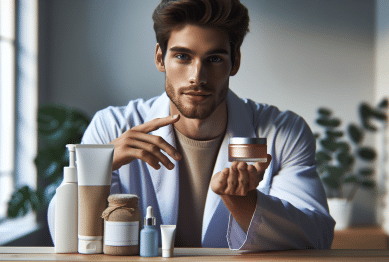Facial yoga is gaining attention for promising natural support for healthy skin and wellness. This practical guide uncovers how facial yoga routines contribute to toning facial muscles, supporting skin elasticity, and boosting overall confidence—without the need for expensive treatments.
Why Facial Yoga Is Capturing Wellness Enthusiasts
Facial yoga, a series of exercises designed to engage and stretch facial muscles, has become a buzzworthy topic among beauty and wellness advocates. Unlike traditional cosmetic treatments, these movements promise a more natural approach to enhancing appearance. Practitioners claim improved skin tone, reduction in the appearance of fine lines, and a rejuvenated overall look—all without invasive procedures. This popularity is partly due to growing awareness of skin health and the desire for accessible, non-invasive wellness practices that fit into daily life. As more people search for cost-friendly alternatives to expensive skincare regimens and injections, facial yoga stands out as a promising option for anyone wanting to feel empowered in their self-care routine.
Interest in facial yoga is also fueled by a broader shift toward holistic health. Integrative wellness is not just about the absence of illness—it’s about thriving. Facial yoga embodies this philosophy by suggesting that regular practice may gently support skin’s natural elasticity while promoting relaxation and mental clarity. Even brief routines offer a chance to disengage from digital screens, relieve tension, and reconnect with the present moment. These features make the practice attractive, especially for people balancing work, family, and social life. The sense of calm that comes from mindful facial movement is an unexpected bonus for many enthusiasts.
Notably, facial yoga’s accessibility sets it apart from many beauty trends. There’s no need for expensive tools or salon visits. Many routines require nothing more than a quiet space, clean hands, and a few guided instructions. The democratization of wellness means anyone can start exploring these exercises at home, tailoring them to personal comfort and goals. With credible research and success stories gradually surfacing, curiosity about what facial yoga can offer continues to grow globally.
The Science of Facial Muscles and Aging
Facial muscles are unique in structure and function compared to much of the body. They are responsible for expression, speech, and subtle gestures that form the language of connection. Over time, factors like repeated use, gravity, and loss of skin elasticity cause these muscles to weaken, contributing to familiar signs of aging such as sagging, wrinkles, or drooping eyelids. Nevertheless, emerging evidence suggests that, just like other muscles, facial muscles respond to regular activation. Advocates argue that deliberate movement and strengthening may contribute to firmer skin and more lifted contours (Source: https://www.ncbi.nlm.nih.gov/pmc/articles/PMC4642409/).
The concept behind facial yoga revolves around increasing circulation. When facial muscles are exercised, blood flow to the skin’s surface improves, potentially delivering more nutrients and oxygen. This process is believed to support cellular renewal, subtly promoting a brighter complexion and more youthful radiance. While these results aren’t instantaneous, regular practice over weeks or months may contribute to cumulative changes that encourage individuals to maintain consistency (Source: https://www.sciencedirect.com/science/article/pii/S0975947616300174).
Clinical experts caution that while facial yoga is not a substitute for medical or cosmetic interventions when significant correction is needed, its gentle technique may provide meaningful benefits for everyday care, facial tension relief, and natural appearance support. It’s important to recognize that genetics, hydration, sun exposure, and stress all influence skin’s aging process. Facial yoga offers a proactive, empowering way to participate in holistic beauty strategies alongside established skin care routines.
Popular Facial Yoga Exercises and What They Target
Facial yoga routines usually combine stretching, resistance, and massage movements targeting distinct muscle groups. One widely-referenced move is ‘The Cheek Lifter,’ where gently smiling and raising the cheeks is paired with holding positions to work the muscles underneath the cheekbones. Another popular exercise, ‘The Eyebrow Lift,’ encourages raising the eyebrows and holding for several seconds, aiming to tone the forehead and upper eye area. These repetitive motions are believed to counteract the everyday downward pull of gravity and fatigue that accumulate from prolonged screen time and stress.
‘The Neck Firmer’ and ‘Jaw Sculptor’ exercises target areas prone to sagging and definition loss. These moves focus on slow, deliberate resistance: pressing the tongue to the roof of the mouth while extending the neck or creating gentle tension along the jawline. Practitioners often report feeling energized after a brief session, accompanied by a subtle tingling that signals increased blood circulation. Even simple lip pursing and smiling exercises are used to activate muscles and bring awareness to habitual tension, especially around the mouth. Variety in routines ensures everyone can find moves to suit their needs.
Resources to guide these practices abound. Reputable wellness organizations and professional trainers offer video demonstrations and downloadable guides, emphasizing safety, gradual progression, and gentle care. Experts recommend starting with short sessions—about 10 minutes daily—before increasing frequency as comfort grows. Gentle touch is key; excessive pressure or quick, aggressive repeats should be avoided to prevent irritation or strain. The experience is ultimately about establishing a regular rhythm, supporting skin tone, and enjoying a calming break from daily noise (Source: https://www.aad.org/public/everyday-care/skin-care-basics/care/skin-care-tips-facial-yoga).
Beyond Beauty: Emotional and Mental Wellness Perks
Facial yoga isn’t just about outward appearance—it offers surprising emotional and psychological benefits. The act of slowing down to focus on gentle movement and breathing naturally reduces overall stress levels, a factor closely linked to the health and vibrancy of skin. This mindful pause cultivates a moment of quiet, particularly beneficial for people navigating fast-paced routines or challenging situations. Integrating facial yoga into daily habits can create a calming ritual, giving structure and a sense of self-compassion to one’s self-care repertoire (Source: https://www.health.harvard.edu/mind-and-mood/the-mind-body-connection).
Another meaningful aspect is the boost in self-confidence that can develop after weeks of consistent practice. Noticing subtle positive changes in the mirror—such as a fresher look, fewer expression lines, or a brighter gaze—often motivates individuals to continue. This sense of agency supports mental well-being, making facial yoga both a beauty tool and an act of self-care. Some mental health professionals even suggest that such empowering routines can positively impact overall mood and outlook (Source: https://www.psychologytoday.com/us/blog/the-moment-youth/202201/the-benefits-facial-yoga).
Finally, incorporating facial yoga aligns with wider wellness trends that value presence, gratitude, and personal growth. Whether practiced alone, with friends, or guided by online groups, these rituals foster a thriving sense of belonging in wellness communities. The intersection of expressive movement, deep breathing, and mindful awareness transforms simple exercises into resources for emotional resilience and joy—benefitting both mind and skin.
Tips for Incorporating Facial Yoga into Your Lifestyle
Many people wonder how to reliably weave facial yoga into their everyday rhythm. Experts encourage beginning with a specific time of day—such as after cleansing or before sleep—to establish routine. For busy schedules, even a few minutes during work breaks are enough to recharge and relax. Setting gentle reminders or following along with short instructional videos can help maintain momentum as facial yoga becomes second nature. The most vital step is to prioritize consistency over intensity, allowing benefits to accumulate over weeks rather than anticipating overnight change.
Pairing facial yoga with other supportive practices maximizes impact. Drinking water, avoiding excessive sun, and using gentle skincare products all reinforce the positive effects of facial movement. Some practitioners integrate facial massage or soothing oils to further stimulate skin. Experimenting with light stretching, guided meditation, or calming music during facial yoga may deepen the benefits, transforming a routine exercise into a cherished daily ritual. Adaptability and enjoyment matter most—there’s no single “correct” approach.
Tracking personal progress can also be rewarding. Some suggest taking periodic photos to observe subtle improvements, while others journal about how regular practice makes them feel. Varying routines every few weeks keeps sessions engaging and matches shifting wellness goals. With patience and creativity, facial yoga can adapt to changing needs, ultimately enhancing quality of life along with skin vitality (Source: https://www.clevelandclinic.org/health/articles/22630-facial-exercises).
Potential Considerations and When to Seek Guidance
While facial yoga appears safe for most people, a thoughtful approach is wise. Those with recent facial injuries, severe dermatological conditions, or ongoing medical treatments should consult professionals before starting new routines. Gentle, slow practice reduces risk and fosters positive outcomes. If any discomfort, pain, or unexpected changes occur during sessions, pausing and reevaluating is recommended. Listening to the body’s feedback is vital with all self-led wellness activities.
Research into facial yoga continues to evolve, and individual results vary based on age, skin type, genetics, and lifestyle. Current studies suggest that while facial yoga’s promise is real for some, patience and realistic expectations are key. Combining facial yoga with proven skincare approaches and healthy living maximizes the potential for a naturally vibrant complexion. Ongoing engagement with new research and diverse voices ensures a balanced view that supports sustainable well-being.
Professional practitioners trained in facial anatomy and aesthetics are increasingly offering workshops or private consultations for those who need extra support. Seeking their guidance may be helpful for anyone wanting to personalize routines, address specific concerns, or build confidence through in-depth learning. As facial yoga finds its place in mainstream wellness, responsible, well-informed practice helps everyone participate safely and enjoyably (Source: https://www.mayoclinic.org/healthy-lifestyle/adult-health/in-depth/facial-exercises/art-20423436).
References
1. Alam, M., & Dover, J. S. (2016). The Impact of Facial Exercise on the Appearance of Aging. Retrieved from https://www.ncbi.nlm.nih.gov/pmc/articles/PMC4642409/
2. Jang, Y. H., & Kim, K. H. (2016). Effect of Facial Muscle Exercise on Facial Rejuvenation. Retrieved from https://www.sciencedirect.com/science/article/pii/S0975947616300174
3. American Academy of Dermatology. (n.d.). Skin Care Tips: Facial Yoga. Retrieved from https://www.aad.org/public/everyday-care/skin-care-basics/care/skin-care-tips-facial-yoga
4. Harvard Health Publishing. (n.d.). The Mind-Body Connection. Retrieved from https://www.health.harvard.edu/mind-and-mood/the-mind-body-connection
5. Psychology Today. (2022). The Benefits of Facial Yoga. Retrieved from https://www.psychologytoday.com/us/blog/the-moment-youth/202201/the-benefits-facial-yoga
6. Cleveland Clinic. (n.d.). Facial Exercises. Retrieved from https://www.clevelandclinic.org/health/articles/22630-facial-exercises









